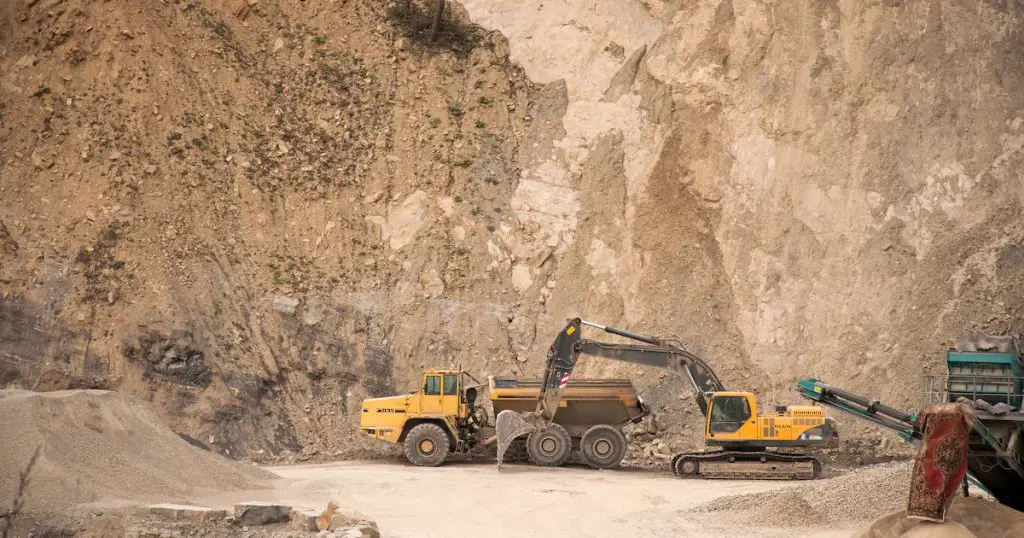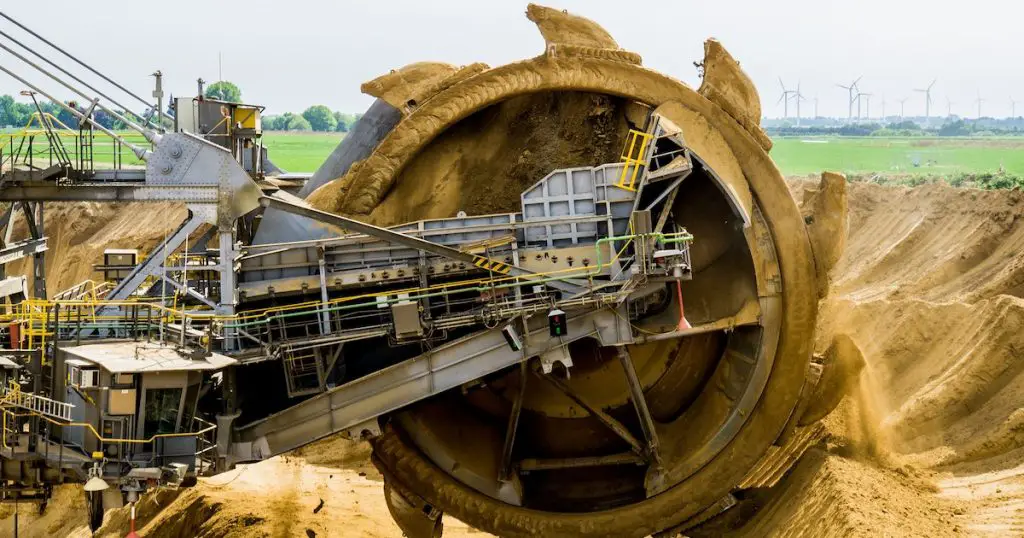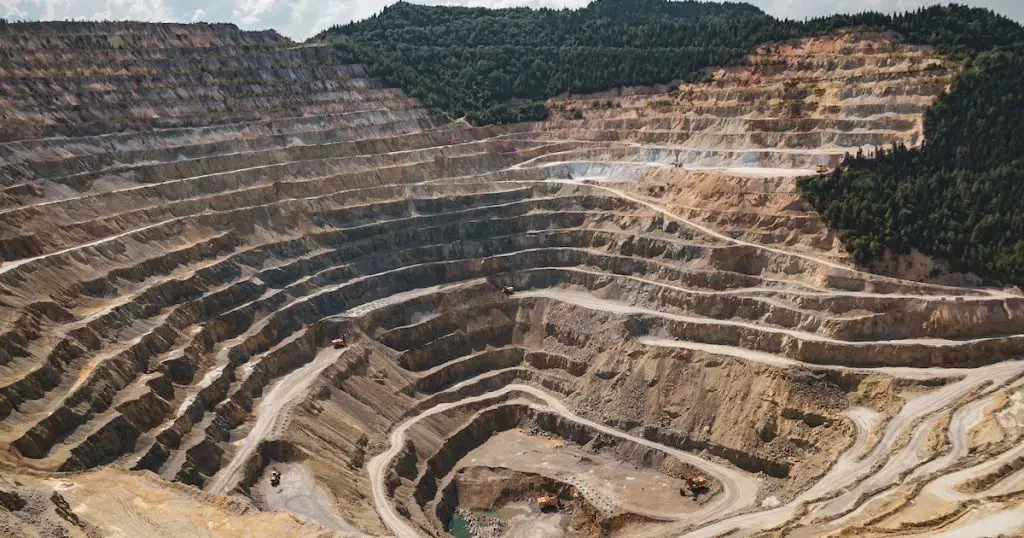The Prescott region, known for its rich history and picturesque landscapes, has another story lurking beneath its surface: the environmental effects of mining. Mining has been an integral part of the region’s economic development, yet it has left behind a series of environmental footprints.

This article seeks to unveil these impacts and present a balanced view of the environmental effects of mining in the Prescott region.
Landscape Alterations
The mark of mining on natural landscapes is often stark and enduring. Beyond the obvious excavations and pits, the entire topographical identity of a region can undergo dramatic transformations. Hills may be flattened, valleys filled, and natural vistas altered irreversibly.
Such changes not only affect the immediate aesthetic appeal of the area but can also influence local weather patterns, water drainage, and habitats.
While some of these alterations provide economic boons, they also come with an ecological and cultural cost, forever changing the familiar terrains and vistas that local communities have known and cherished for generations.
Physical Changes to Topography
Mining often requires digging deep into the Earth, resulting in pits and tunnels. These alterations not only change the immediate landscape but can also cause land subsidence in surrounding areas.
According to the U.S. Geological Survey, land subsidence can lead to more frequent flooding and even permanent inundation in certain zones.
Fragmentation of Habitats and Ecosystems
The creation of mines disrupts the natural habitats of many organisms.
This fragmentation, as noted by the World Wildlife Fund, can make it difficult for certain species to find food, reproduce, and survive. Some species may never return even after mining operations have ceased.
Impact on Local Flora and Fauna
The alteration of landscapes can harm the native plants and animals of the region. For example, the removal of vegetation can lead to soil erosion and loss of habitat for ground-dwelling species.
Furthermore, the introduction of non-native species for reclamation can further endanger native species. A report by Nature suggests that several plants and animals native to mining regions worldwide face potential extinction if not addressed.
Soil and Land Degradation
Mining’s footprint on the land is indelible and multifaceted. As vast areas are excavated, the once-fertile soil layers can become disrupted, leading to reduced agricultural potential and increased vulnerability to erosion.
This displacement of soil also brings about changes in the land’s topography, often leaving scars that alter drainage patterns and render the land less hospitable for native vegetation.
Over time, such degradation can transform vibrant landscapes into barren zones, impacting not just the land’s aesthetic value but also its ecological functionality. The challenge lies in minimizing these impacts and actively restoring lands post-mining to ensure they continue to support life and serve their natural purposes.
Soil Erosion and Loss of Fertility
When vegetation is removed for mining, the exposed soil becomes more susceptible to erosion. This not only degrades the land but can lead to sedimentation in nearby water sources.
The Soil Science Society of America has found that such erosion can significantly reduce soil fertility, impacting agriculture and local flora.
Contamination from Mining Residue and Waste
Mining processes often involve chemicals that, when mishandled, can seep into the soil, contaminating it. Heavy metals and acids can render the land unusable and may even make their way into local food chains.
The Environmental Protection Agency (EPA) has listed several mines as Superfund sites due to their high levels of contamination.
Reclamation and Rehabilitation Challenges
Restoring mined land to its original state, or at least a state that’s ecologically productive, is a challenge. Techniques like replanting can help, but the original biodiversity can be hard to regain.
Several initiatives, like those highlighted by the International Union for Conservation of Nature (IUCN), are working towards effective rehabilitation techniques.
Water Resources
The intertwined relationship between mining and water resources is both intricate and consequential. Mining activities can significantly strain local water supplies, diverting vast amounts for processing and cooling.
Additionally, the risk of pollutants from mining operations contaminating nearby water bodies is ever-present, threatening aquatic life and potentially rendering water unsafe for human consumption.
Acid mine drainage, in particular, can lead to long-term environmental damage, turning vibrant aquatic ecosystems into uninhabitable wastelands. Balancing the water needs of mining operations while safeguarding this invaluable resource for ecosystems and communities is a pressing challenge in the realm of sustainable extraction.
Depletion of Local Water Sources
Mining, especially methods like open-pit mining, requires vast amounts of water. This can strain local water sources, leading to scarcity in surrounding areas.
According to the World Resources Institute, several mining regions globally face potential future water stress.
Contamination of Rivers, Streams, and Groundwater
Water run-off from mines can carry with it pollutants that contaminate local water bodies. Acid mine drainage is a significant concern, as it can harm aquatic life and make water unsafe for consumption.

A study published on ScienceDirect detailed the extensive impacts of such contaminations on aquatic ecosystems.
Impact on Aquatic Ecosystems and Biodiversity
Beyond direct contamination, mining can alter the natural flow of rivers and streams. This can lead to loss of habitats for aquatic species and disruption of local ecosystems.
The ramifications, as outlined by the Smithsonian, are vast and long-lasting.
Air Quality Concerns
Mining operations can cast a heavy toll on the air we breathe. From the dust generated during extraction to the release of harmful gases in certain mining processes, the quality of the surrounding air can deteriorate significantly.
These airborne particles and chemicals not only pose direct health risks to workers and nearby residents but can also travel vast distances, impacting communities far removed from the mining sites. Moreover, the emissions contribute to broader atmospheric concerns, including acid rain and haze.
In the face of these challenges, ensuring robust air quality monitoring and management around mining areas becomes an indispensable pillar of responsible resource extraction.
Emission of Greenhouse Gases and Particulates
Mining operations release a range of pollutants into the air, from dust to methane. These not only contribute to global climate change but can also have immediate health impacts on local communities.
The World Health Organization (WHO) has documented numerous cases where mining-related air pollution has led to respiratory illnesses.
Health Implications for Local Communities
Beyond the global implications of greenhouse gas emissions, local communities bear the brunt of the immediate effects.
From respiratory problems to potential carcinogenic exposure, the health costs can be profound. Insights from the National Institutes of Health shed light on these challenges.
Mitigation Measures and Technologies
The silver lining is that there are technologies and measures to reduce these harmful emissions.
Cleaner production methods, improved equipment, and efficient resource management can all play a role, as highlighted by the International Council on Mining and Metals (ICMM).
Biodiversity and Ecosystem Impacts
The ripple effects of mining on biodiversity and ecosystems are profound and far-reaching. As vast tracts of land are disturbed for extraction, habitats are fragmented and sometimes destroyed, leading to a decline in species diversity and abundance.
Aquatic ecosystems too bear the brunt, as pollutants infiltrate waterways, affecting everything from microscopic plankton to larger aquatic animals. Such disturbances can disrupt the delicate ecological balance, leading to unforeseen consequences like invasive species colonization.
The interconnected web of life, with its myriad species and habitats, becomes vulnerable, highlighting the need for cautious and responsible mining practices to preserve the intricate tapestry of our planet’s biodiversity.
Disruption of Animal Migration and Breeding
Mines can act as barriers to animal movement. This has repercussions for migration patterns, access to food, and breeding.
Research conducted by the Wildlife Conservation Society underscores the importance of preserving natural animal movement paths.
Loss of Species and Reduction in Biodiversity
The combined effects of habitat loss, pollution, and altered landscapes can lead to a reduction in biodiversity. Some species may face extinction, especially those that are already vulnerable.
The Biodiversity A-Z portal provides a list of such species affected by global mining activities.
Long-Term Ecological Consequences
Even after a mine is closed, the ecological consequences can persist. Invasive species, altered water flows, and long-term pollution can continue to impact ecosystems.
Detailed reports from the United Nations Environment Programme (UNEP) discuss these lingering challenges.
Climate Change Implications
Mining’s intersection with climate change is both profound and multifaceted. The extraction processes, often energy-intensive, contribute significantly to greenhouse gas emissions. Simultaneously, the deforestation and land degradation associated with mining can diminish the Earth’s natural carbon sinks, exacerbating global warming.
Moreover, the altered landscapes, resulting from mining activities, can influence local and sometimes even regional climate patterns, leading to unexpected shifts in weather, affecting agriculture and natural ecosystems.
In a world grappling with the challenges of climate change, understanding the role of mining and its implications becomes paramount in charting a sustainable future for both industry and the environment.
Changes in Local Microclimates
Mining can also alter local microclimates. The removal of vegetation, exposure of soil, and large-scale earth movements can influence temperature and humidity in the vicinity of mines. This, in turn, can affect local flora, fauna, and human settlements.

An in-depth study from the Journal of Applied Meteorology and Climatology sheds light on these localized climate changes due to mining activities.
Mining as a Driver for Regional Climate Variability
Larger mines and extensive mining regions can even influence regional climate patterns. These alterations can result in unexpected and often adverse weather patterns, impacting agriculture and natural ecosystems.
Resources provided by NASA’s Earth Observatory have highlighted how human activities, including mining, can induce significant regional climatic shifts.
Socio-Economic Impacts
Mining, while pivotal for economic progression, casts a multifaceted shadow on the socio-economic fabric of regions like Prescott. While it often introduces job opportunities and boosts local economies, it can also inadvertently displace communities, alter traditional livelihoods, and pose health concerns stemming from environmental degradation.
These impacts, both positive and negative, reverberate through generations, shaping the cultural, economic, and societal narratives of the region. As such, understanding and addressing these socio-economic consequences is as crucial as managing the direct environmental ramifications of mining activities.
Shifts in Community Livelihoods
The introduction or expansion of mining can dramatically alter the livelihoods of local communities. While some may find employment in the mines, others, especially those dependent on agriculture, might face challenges due to land degradation.
The World Bank has published multiple case studies showcasing these complex socio-economic dynamics in mining regions.
Economic Benefits vs. Environmental Costs
It’s undeniable that mining can boost local and national economies. However, there’s a trade-off between the immediate economic benefits and the long-term environmental and health costs.
A comprehensive review by the Sustainable Development Solutions Network (SDSN) delves into this delicate balance, emphasizing sustainable mining practices.
Health and Societal Consequences of Environmental Degradation
As previously touched upon, the environmental repercussions of mining can have direct health implications for local communities.
Beyond the physical health concerns, the societal and psychological effects – from displacement, loss of traditional lands, or changes in community structures – are profound. Insights from the United Nations Development Programme (UNDP) further explore these multi-faceted impacts.
Regulatory and Policy Landscape
The realm of mining is intricately woven with regulations and policies designed to oversee its impact on the environment and society. These frameworks, established at both local and international levels, set the standards for mining operations, dictating how resources are extracted, waste is managed, and land is restored post-extraction.
In the Prescott region, these regulations aim to strike a balance between promoting economic growth and preserving the environment. However, the effectiveness of these policies often becomes a topic of discussion, as they continuously evolve in response to new research findings, technological advancements, and public opinion.
The dynamic nature of this landscape underscores the importance of continuous evaluation and adaptation to ensure the well-being of both the planet and its inhabitants.
Current Environmental Regulations for Mining
Different regions have varied regulatory frameworks governing mining activities. In the Prescott region, there have been efforts to tighten these regulations to protect the environment.
An overview of these rules is available on the U.S. Environmental Protection Agency’s website.
Effectiveness and Gaps in Existing Policies
While regulations exist, their effectiveness in practice can be a matter of debate. There are often gaps that can be exploited, leading to environmental degradation.

The Natural Resources Defense Council (NRDC) has critiqued some of these policies, highlighting areas for improvement.
International Standards and Best Practices
Several international bodies and coalitions have set forth guidelines and best practices for sustainable mining.
One such set of guidelines, by the International Council on Mining and Metals (ICMM), emphasizes a holistic approach, considering both environmental and social factors.
Mitigation and Restoration
The consequences of mining on the environment have underscored the critical importance of mitigation and restoration efforts. Mitigation encompasses proactive measures taken to minimize or offset the adverse impacts of mining on ecosystems and local communities.
This includes cleaner extraction methods, efficient waste management, and habitat preservation strategies. On the other hand, restoration focuses on rehabilitating and revitalizing areas that have already been affected by mining.
This involves replanting vegetation, restoring waterways, and ensuring that wildlife can thrive once more. Together, these two approaches form a comprehensive response to the environmental challenges posed by mining, striving for a balance between human needs and environmental stewardship.
Techniques for Minimizing Environmental Harm
From cleaner extraction methods to waste management solutions, there are ways to reduce the environmental footprint of mining. Techniques and advancements are detailed on platforms like Mining.com, showcasing the industry’s efforts to innovate.
There are instances where previously mined lands have been successfully restored. Such success stories, documented by organizations like Reclamation Research Group, can serve as inspirations and blueprints for future endeavors.
Challenges and the Way Forward
Despite success stories, the road to comprehensive restoration is fraught with challenges. Financial constraints, technological limitations, and sometimes, lack of political will can hinder efforts.
An analysis by the Global Environment Facility (GEF) delves deeper into these challenges and potential solutions.
Frequently Asked Questions: Environmental Effects of Mining in Prescott Region
How long has mining been a part of the Prescott region?
Mining has been integral to the Prescott region for over a century, with the first significant operations commencing in the late 1800s.
Are there any active mines currently causing environmental harm?
While many mines have adopted more sustainable practices, concerns persist regarding certain active operations and their environmental effects.
What can locals do to reduce the impact of mining?
Community-driven initiatives, supporting sustainable practices, and collaborating with local authorities can play a significant role in minimizing environmental damage.
How are other global mining regions tackling similar challenges?
Different regions adopt varied approaches, but common themes include stricter regulations, community engagement, and investments in sustainable mining technologies.
Are there alternative mining methods that are more environmentally friendly?
Yes, with advancements in technology, more sustainable mining methods are emerging, although their widespread adoption requires significant investments and policy support.
Conclusion
The environmental effects of mining in the Prescott region provide a lens into the broader challenges of balancing economic growth with ecological responsibility. As we delve deeper into the intricacies of this issue, it’s evident that collaborative, informed, and proactive measures are crucial.
The Prescott region, with its rich history and community spirit, has the potential to pave the way for sustainable mining practices, not only for itself but as a beacon for the world.



Leave a Comment
You must be logged in to post a comment.